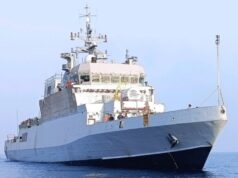The Philippines must broaden ties with India and ASEAN

US Defence Secretary Lloyd Austin who is on a visiting tour to South Korea met with his South Korean counterpart on Tuesday. The visit was described as “a sharp uptick in destabilizing PRC [People’s Republic of China] operational behavior,” including what was described as “dangerous air-to-air intercepts” and use of “swarms of maritime militia vessels” in the South China Sea.
Austin will next leave South Korea for a visit to the Philippines.
As per US Media when Austin arrives in the Philippines, he would try to reach an agreement with Philippine President Ferdinand Romualdez Marcos Jr. to open four US military sites at Philippine bases, one of which is located in Luzon Island and another located in Palawan, which was visited by US Vice President Kamala Harris last November. The two places are close to Republic of Taiwan and it’s Nansha Islands.
The intention of defending Taiwan against China could not be more obvious. At present, the US military already has five bases in the Philippines on a rotating basis. Adding four more will mean that US-Philippines military cooperation has taken another step forward. This is exactly what the US is striving for.
After Marcos was elected president, the Philippines became Washington’s key target to woo. Joe Biden was the first foreign leader to call to congratulate Marcos, and senior Washington officials visited the Philippines intensively. If this agreement is reached, it can be regarded as a result of the several months’ efforts. With so many diplomatic and political resources invested, the US State Department and the Pentagon truly need to hand over some decent “political achievements” to comfort domestic voters, and it looks better when written in PPT.
The main significance of this agreement that the US is pushing hard may be that it can be viewed as a “diplomatic and military achievement project” for Washington. In order to deal with China, the US is courting partners around the world…the most powerful and important being India.
The US and the Philippines are military allies. Whether and how to strengthen military relations is supposed to be a matter between the two countries. But the problem now is that the Philippines wants to ensure its own security,in a multipolar world without enslaving itself to a very close military alliance with USA.
Washington has tried every means to “set a trap” for the Philippines, deliberately linking the cooperation between the two to the “China threat” and trying to push the Philippines to the front line of confrontation with China. The difference between the two is obvious. US Secretary of State Antony Blinken’s high-profile visit to the Philippines last year reaffirmed the US’ “security commitment,” while Manila said it could not afford “any further escalation of tensions in the region.” Over the past few years, Manila has always maintained strategic sobriety. It knows clearly where its national interests lie.
The Philippines emphasizes that its military cooperation with the US “does not target any specific third party.” this is because the Philippines is unwilling to “choose sides” between China and the US. This attitude is both clear and firm. But if it does not aim at China as a “third party,” the US would not have such a great interest in wooing the Philippines. In other words, there are fundamental differences in the stances and interests of the US and the Philippines, which not only requires the Philippines to carefully balance, but also adds Washington’s diplomatic costs and weakens its diplomatic effectiveness.
Philippines is certainly highly concerned about the situation in the Taiwan Straits, but will not get involved directly. the Philippines doesn’t want war and chaos, but a stable region.
So it must prudently balance its relationship with major powers in the area, is a huge test for Manila, but the scale it can advance should be drawn around the center of its own national interests. The Philippines was once a colony of the US, and it is still a military ally of the US in the Asia-Pacific region. The largest overseas base of the US military was once in the Philippines, but the Philippines took back the sovereignty of the base from the US in 1992. In front of the US, unlike some other countries, the Philippines has generally demonstrated the independence of a sovereign state.
Therefore the Philippines must maintain this tradition and display its strategic steadiness and political wisdom. Instead of granting more bases, it must give only visiting / berthing permissions to US Navy. Manila must improve its relationship with Taiwan, Vietnam and Indonesia. It should have closer military to military interaction with Japan, South Korea and Australia.
However, it should get even more closer to India from where it can get high tech strike missiles, air defence missiles and radars and Tejas fighters at the Cheapest rate possible. BRAHMOS cruise missile, Prahar long range missile and Tejas fighters will send a message to anyone trying to intimidate Phillippines.




